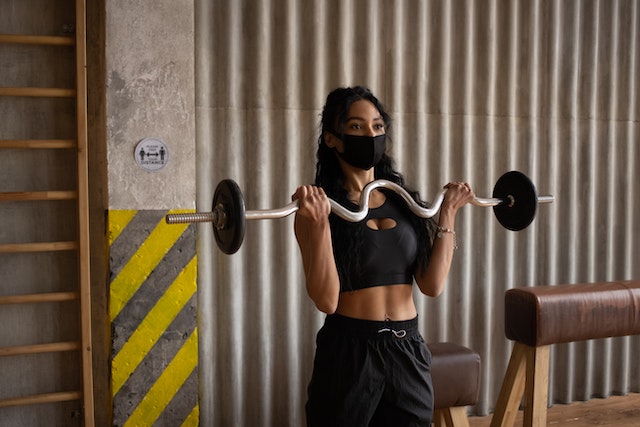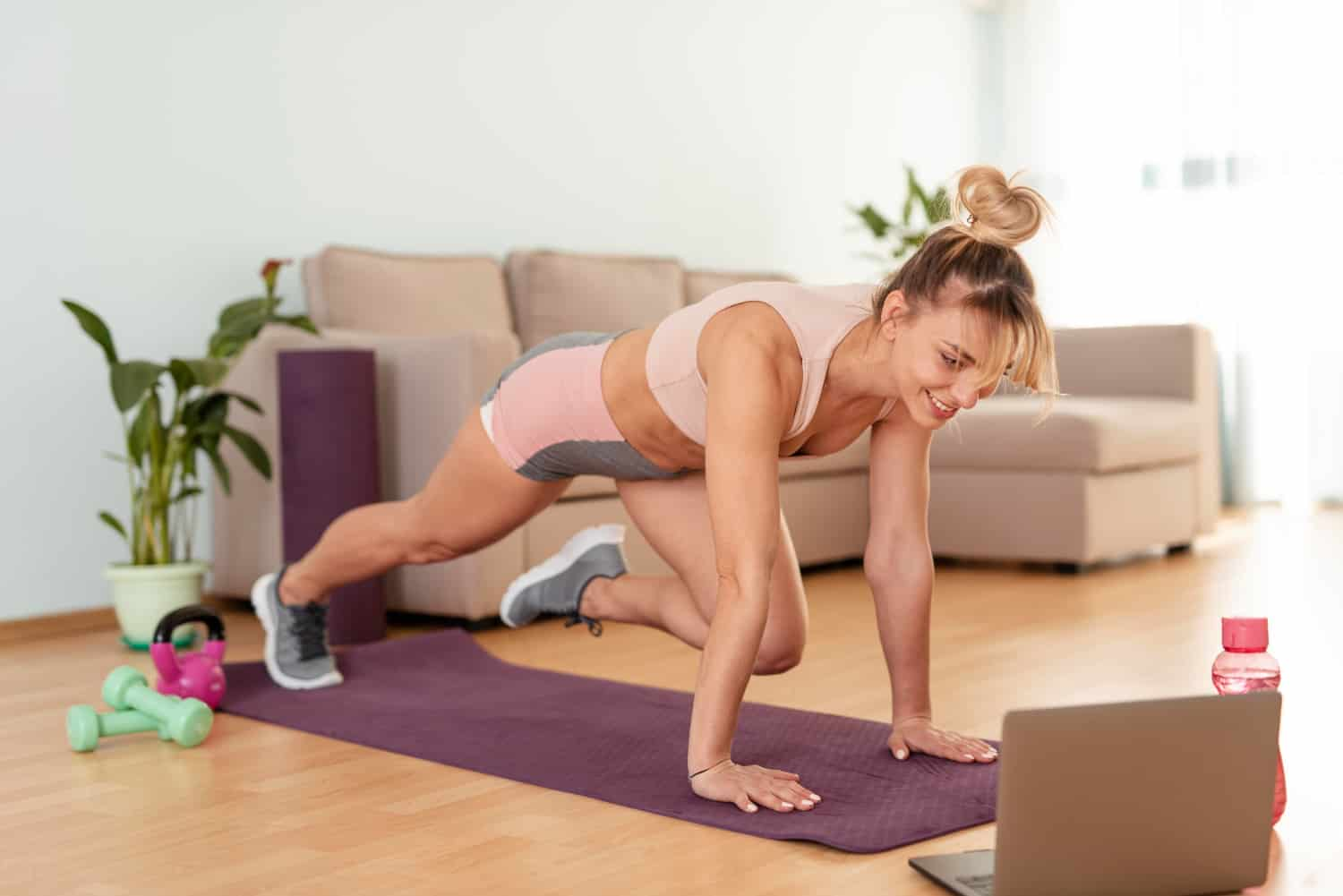Prepare yourself for a thrilling adventure into the world of functional strength training! Your fitness potential is what this blog post is all about assisting you with.
We’ll talk about the incredible advantages of functional fitness, offer helpful exercises, and share knowledgeable guidance.
No matter your level of fitness or experience, functional strength training is ideal for enhancing your general performance and usability in daily life. Let’s get started!!
If you are new to join fitness plan and start doing workout for first time then 5 minutes beginners workout plan you must try!!
How you can improve your fitness by doing Functional Strength Training.
Understanding Functional Strength Training:
The goal of functional strength training is to maximise your body’s capacity for flexible, effective performance of everyday movements.
Functional training involves many muscle groups at once, simulating the demands of daily activities, in contrast to classical weightlifting, which concentrates on separate muscle groups.
Functional training improves physical performance by including strength, stability, mobility, and coordination, and it also gets you ready for the demands of everyday life.
The Benefits of Functional Fitness:
Embracing functional fitness brings a wealth of benefits to your life. Improved balance, flexibility, stability, and injury prevention are just a few of the advantages you can expect.
By training your body to function as a cohesive unit, you’ll enhance your overall athleticism and performance in sports and recreational activities.
Additionally, functional fitness workouts promote better posture and reduce the risk of common musculoskeletal imbalances.
Functional strength training VS Traditional strength training
Functional Strength Training:
- Focuses on improving overall functional fitness and performance in daily activities.
- Emphasizes exercises that mimic real-life movements.
- Engages multiple muscle groups simultaneously.
- Uses bodyweight, stability balls, resistance bands, or functional training equipment.
- Enhances coordination, stability, balance, flexibility, and core strength.
Traditional Strength Training:
- Focuses on isolated muscle groups.
- Involves weightlifting machines or free weights.
- Aims to increase muscle size and strength in specific areas.
- Exercises like bicep curls, bench presses, and leg extensions are common.
Please note that these are general characteristics of each training approach, and individual training programs may vary.
“Functional Fitness: Empowering capability through strength, mobility, and resilience.”
Functional Training Exercises:
Let’s dive into some effective functional training exercises that will elevate your fitness routine:
- Squat to Overhead Press: This exercise targets multiple muscle groups, including your legs, glutes, core, and shoulders. Begin by performing a squat, then explode upward while pressing dumbbells or a barbell overhead. This compound movement mimics the actions required for lifting objects overhead in everyday life.
- Deadlifts with Proper Form: Deadlifts are a fundamental functional exercise that engages the posterior chain, including your hamstrings, glutes, and lower back. Remember to maintain a neutral spine and lift the weight from the ground using your legs and hips, not your back. This exercise strengthens your muscles for activities like bending, lifting, and carrying objects.
- Medicine Ball Slams for Power and Coordination: Medicine ball slams are a dynamic exercise that targets your core, shoulders, and arms. Hold a medicine ball overhead and forcefully slam it into the ground, catching it on the rebound. This movement enhances power, coordination, and functional core strength. If you are beginner then Learn How to Do Medicine Ball Slam.
Crafting an Effective Functional Training Workout:
To design a well-rounded functional training workout, follow these tips:
Exercise Selection and Variation:
Choose exercises that target different movement patterns and engage various muscle groups.
Include compound movements like squats, lunges, push-ups, rows, and planks. Incorporate both resistance exercises using weights and bodyweight exercises to challenge your muscles in different ways.
Structuring Your Workout Routine:
Warm up with dynamic movements that activate your muscles and prepare your body for the workout.
Perform exercises in multiple sets with appropriate repetitions, ensuring proper form and technique. Allow for sufficient rest intervals to recover between sets.
Certainly! Here’s an example of a one-week functional fitness plan that incorporates a variety of exercises:

Week 1 Functional Fitness Plan:
Day 1: Full-Body Functional Workout
- Squat to Overhead Press: 3 sets of 10 repetitions
- Deadlifts: 3 sets of 8 repetitions
- Medicine Ball Slams: 3 sets of 12 repetitions
- Plank Hold: 3 sets of 30 seconds
- Single-Leg Romanian Deadlifts: 3 sets of 10 repetitions per leg
- Russian Twists: 3 sets of 12 repetitions per side
Day 2: Cardio and Mobility
- Jumping Jacks: 3 sets of 30 seconds
- Mountain Climbers: 3 sets of 12 repetitions per leg
- High Knees: 3 sets of 30 seconds
- Walking Lunges: 3 sets of 12 repetitions per leg
- Yoga Flow: Perform a series of yoga poses, focusing on improving mobility and flexibility. Hold each pose for 30 seconds to 1 minute.
Day 3: Upper Body Focus
- Push-Ups: 3 sets of 10 repetitions
- Bent-Over Rows: 3 sets of 10 repetitions
- Dumbbell Shoulder Press: 3 sets of 8 repetitions
- Renegade Rows: 3 sets of 10 repetitions per arm
- Bicep Curls: 3 sets of 12 repetitions
- Tricep Dips: 3 sets of 10 repetitions
Day 4: Active Rest and Recovery
Engage in low-impact activities such as walking, swimming, or gentle yoga to promote recovery and active rest.
Day 5: Lower Body Focus
- Goblet Squats: 3 sets of 10 repetitions
- Bulgarian Split Squats: 3 sets of 10 repetitions per leg
- Glute Bridges: 3 sets of 12 repetitions
- Step-Ups: 3 sets of 10 repetitions per leg
- Lateral Lunges: 3 sets of 10 repetitions per leg
- Calf Raises: 3 sets of 12 repetitions
Day 6: Core Strength and Stability
- Plank: 3 sets of 30 seconds
- Russian Twists: 3 sets of 12 repetitions per side
- Bicycle Crunches: 3 sets of 12 repetitions per side
- Flutter Kicks: 3 sets of 12 repetitions per leg
- Side Plank: 3 sets of 30 seconds per side
- Superman Holds: 3 sets of 10-second holds
Day 7: Active Recovery and Flexibility
Engage in activities that promote active recovery and flexibility, such as gentle stretching, yoga, or foam rolling.
Remember to warm up before each workout with dynamic movements and cool down with static stretches afterward.
Adjust the weights and repetitions based on your fitness level and gradually increase the intensity as you progress.
Stay consistent, listen to your body, and have fun while embracing functional fitness!
Achieving Results with Functional Fitness:
To maximize your results and unlock your fitness potential, keep the following strategies in mind:
- Proper Nutrition and Recovery: Fuel your body with a balanced diet rich in nutrients to support your functional strength training. Adequate rest and recovery are equally important for muscle growth and overall well-being. Prioritize quality sleep and listen to your body’s signals for rest and recovery days.
- Tracking Progress and Setting Goals: Monitor your progress by tracking measurements, performance improvements, and achievements. Set realistic and attainable goals to stay motivated and focused on your fitness journey. Celebrate milestones along the way to maintain a positive mindset.
Final Words:
Functional strength training is a powerful tool that will transform your fitness journey and unlock your true potential.
By incorporating functional training exercises into your routine and following sound training principles, you’ll enhance your overall performance and improve your everyday functionality.
Remember, consistency and proper form are key to achieving long-term success. So embrace functional fitness, elevate your workouts, and unleash your fitness potential like never before!
Disclaimer: Before starting any new exercise program, it’s recommended to consult with a healthcare professional or certified fitness trainer to ensure it aligns with your individual needs and capabilities.



